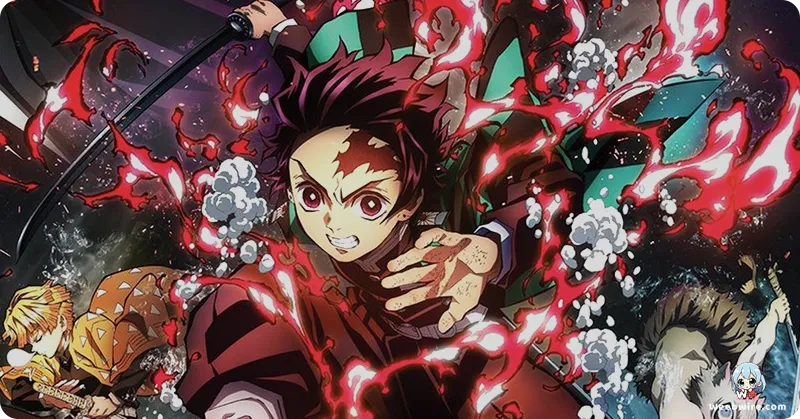Demon Slayer: Mugen Train – Unveiling the Masterpiece Behind the Flames

Demon Slayer -Kimetsu no Yaiba- The Movie: Mugen Train did not just continue Tanjiro Kamado's epic journey; it exploded onto the global cinematic landscape as a monumental achievement in anime filmmaking. The film garnered widespread critical acclaim and ignited unparalleled fan enthusiasm, etching its name in history with breathtaking animation, profound character arcs, and a narrative that resonated deeply with audiences worldwide. Beyond its staggering box office success, a tapestry of intricate creative decisions and behind-the-scenes brilliance contributed to its unique standing. This deep dive uncovers the fascinating elements that forged this cinematic masterpiece.
Ufotable's Animation Excellence: A Visual Spectacle
At the heart of Mugen Train's visual spectacle lies the relentless pursuit of excellence by animation studio ufotable. Renowned for their innovative fusion of traditional 2D animation with sophisticated 3D CGI, ufotable elevated their craft to new heights. The dynamic camera work, particularly evident during the high-octane train sequences and climactic battles, stands out. Achieving such fluid motion and intricate detail on a constantly moving canvas like the Mugen Train demanded groundbreaking techniques. Animators meticulously crafted each frame, often employing multiple layers of effects to vividly convey the raw power of the Hashira's breathing techniques and the grotesque ferocity of the Upper Rank demons. The almost painterly brilliance of Rengoku's Flame Breathing and Akaza's Destructive Kill techniques were not just visual feasts but potent articulations of the immense power wielded by these iconic characters. Ufotable's commitment extended to every minute detail, from the billowing steam of the train to the subtle nuances of character expressions, ensuring every scene pulsated with life and intensity.

Kyojuro Rengoku: The Flame Hashira's Enduring Legacy
Kyojuro Rengoku, the Flame Hashira, emerged as an undeniable fan favorite, his unwavering optimism, profound sense of duty, and unique charisma captivating viewers globally. A particularly endearing aspect of Rengoku's characterization is how his seemingly simple catchphrase, "Umai!" (meaning 'delicious' or 'good'), became an instantly recognizable and beloved signature. Often delivered with infectious gusto while he ate, this phrase perfectly encapsulated his hearty and straightforward personality. The impeccable voice acting by Satoshi Hino was pivotal in bringing Rengoku's fiery spirit to life, meticulously conveying both his indomitable resolve and his deep humanity. Hino's dedication shone through in every line, particularly in his delivery of Rengoku's impactful monologues, which explored profound themes of responsibility and the enduring legacy one leaves behind.
Enmu's Psychological Horror: A Chilling Antagonist
On the darker side, Enmu, the formidable Lower Rank One demon, presented a distinct psychological challenge to Tanjiro and his comrades. His insidious ability to manipulate dreams introduced a chilling layer of psychological horror, an aspect explored with unprecedented depth within the series. Enmu's unsettling design, characterized by his pallid complexion, multiple mouths, and a disconcertingly sinister smile, perfectly complemented his treacherous powers. Animators and character designers collaborated closely to ensure his appearance was as disturbing as his abilities. Furthermore, the dream sequences themselves were a masterclass in visual storytelling, plunging into the characters' deepest desires and fears. These scenes demanded a delicate balance, transitioning seamlessly from serene beauty to nightmarish realities, powerfully illustrating the vulnerability of the Demon Slayers when confronted by their inner demons.
The Evocative Musical Score: Amplifying Emotion and Action
The film's evocative musical score, a collaborative triumph by Yuki Kajiura and Go Shiina, played an indispensable role in amplifying the narrative's emotional weight and the pulse-pounding action sequences. Kajiura's signature ethereal and melancholic compositions provided the perfect backdrop for the introspective dream sequences and moments of sorrow, while Shiina's powerful, orchestral arrangements dramatically heightened the intensity of the battles. A notable detail about the score is its intricate integration of traditional Japanese instruments, seamlessly woven with modern orchestral elements, forging a unique soundscape that is unmistakably Demon Slayer. This meticulous attention to auditory detail ensured that the emotional highs and lows of the story were not just witnessed but profoundly felt by the audience.
Unyielding Fidelity to the Manga: A Cornerstone of Success
Ultimately, the film's unwavering fidelity to Koyoharu Gotouge's original manga material was a cornerstone of its monumental success. Mugen Train meticulously adapted the manga's seventh arc, ensuring that every crucial plot point, character interaction, and emotional beat was preserved and magnificently enhanced through the power of animation. This dedication to the source material reassured long-time fans while simultaneously making the cinematic experience accessible and deeply impactful for newcomers. The creative team at ufotable, under the visionary direction of Haruo Sotozaki, worked tirelessly to translate Gotouge's panel layouts and character expressions into dynamic, moving images, adding layers of depth and immersion unique to animation. This profound commitment to honoring the original vision, combined with ufotable's pioneering animation, the compelling arcs of Rengoku and Enmu, and the powerful musical score, firmly established Demon Slayer -Kimetsu no Yaiba- The Movie: Mugen Train as a landmark in anime cinema, celebrated not just for its breathtaking spectacle but for its profound heart and artistic integrity.
Credits
Demon Slayer -Kimetsu no Yaiba- The Movie: Mugen Train
Author
Koyoharu Gotouge
Cover Art
ufotable
Studio
ufotable
Publisher
Shueisha
Producers





